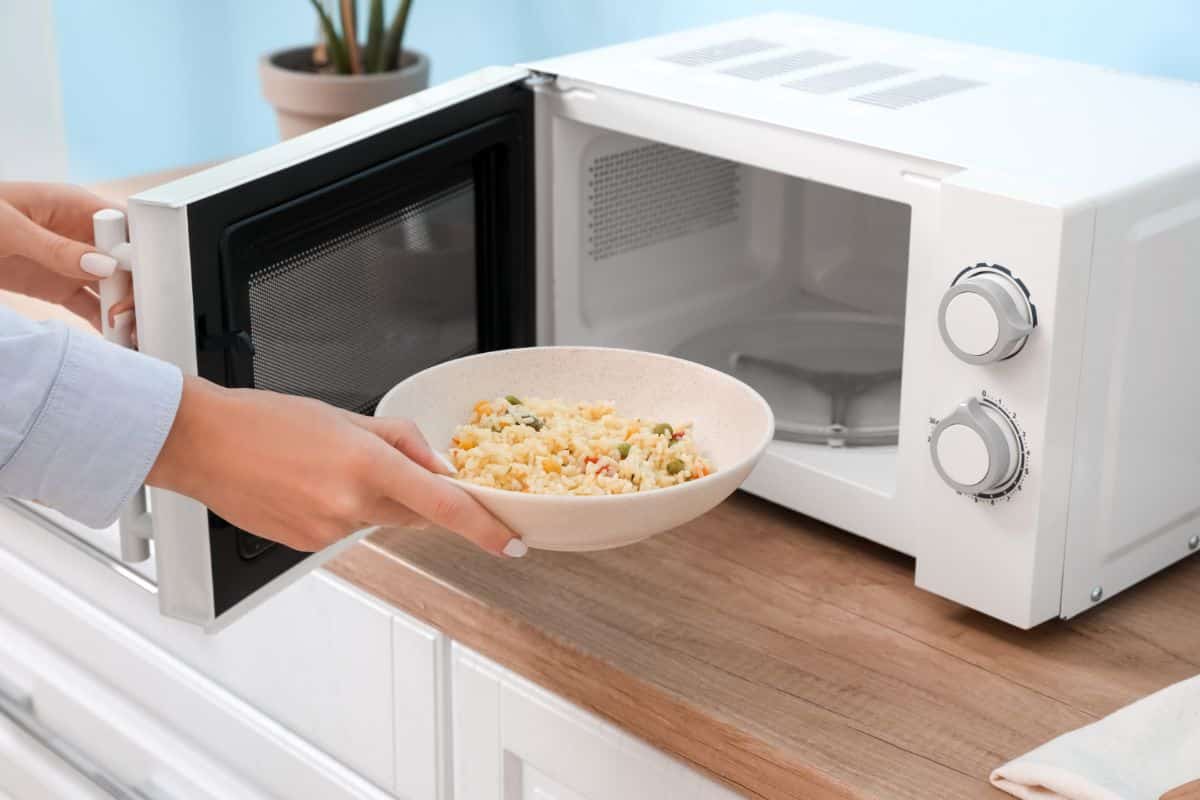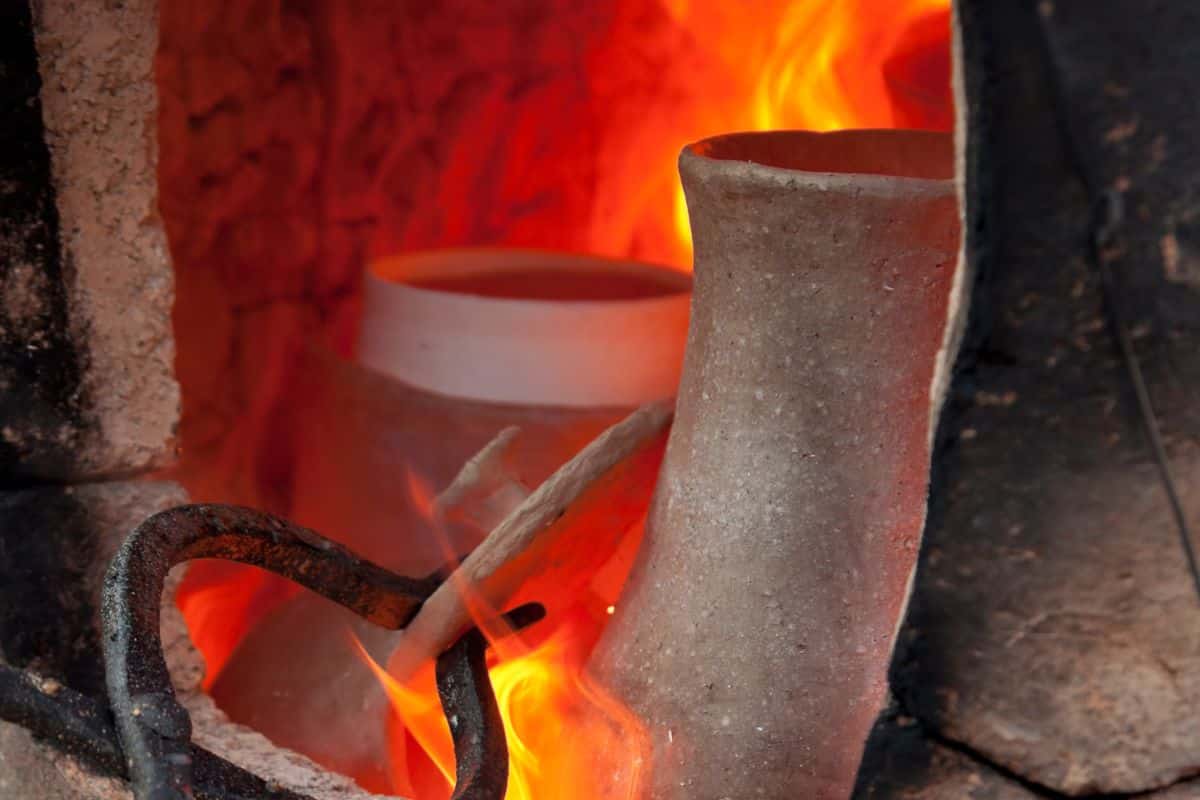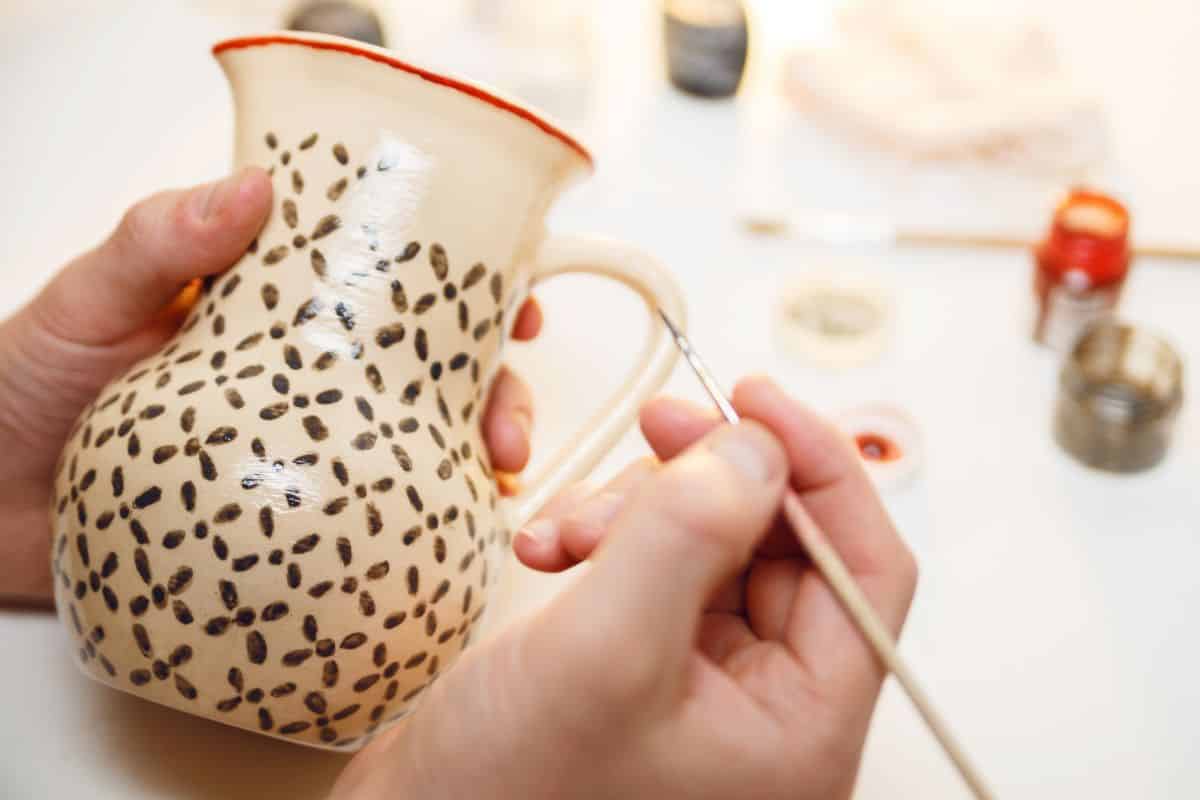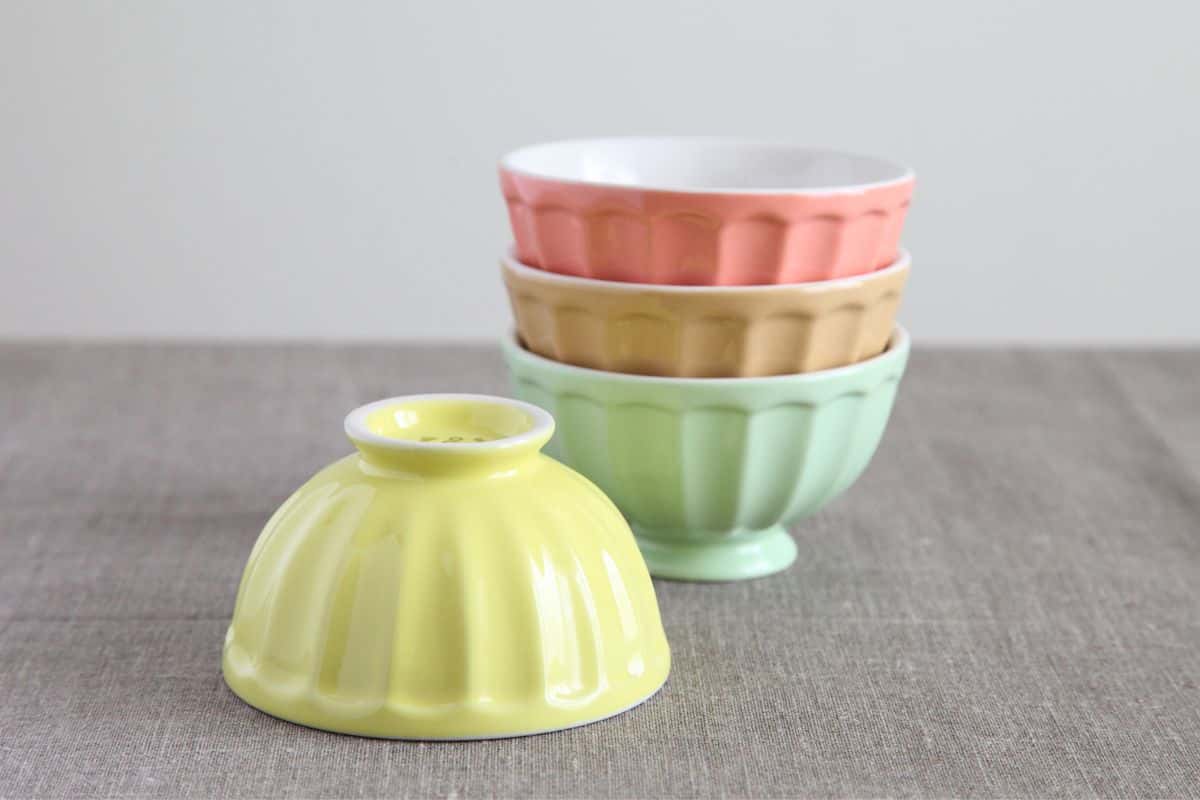You may safely preheat most ceramics in the microwave.
Whether or not ceramics can be microwaved is largely dependent on the type of clay used to make them and the temperature at which they were fired.
Each of us has ceramic items like cups, plates, and pots in our homes.

Additionally, there are instances when you simply want to reheat milk inside a ceramic cup or cook a quick lunch on a ceramic plate.
But is that actually a wise decision?
The majority of ceramics could be used in microwaves without incident; neither will they contaminate your meal nor will they burn you.
Let’s look more closely at what types of ceramics are safe for microwaves since there are several special cases.
Which Ceramics Are Not Microwave Safe
Because some ceramics absorb microwave radiation more quickly than the item or liquid they are holding, they are not microwave safe.
The ceramics would heat up first, and touching them could easily result in burns. The ceramics will be really heated as a result, but your food will still be cold.
Certain ceramic objects can heat up for a variety of reasons. The following are the top three:
- Porosity: Compared to other forms of ceramics, porous ceramics like earthenware get a rough feel and are typically lighter. Without a glaze, this sort of pottery cannot be heated in a microwave. The pores readily absorb the water as well as other liquids, which causes them to heat up significantly in the microwave. Additionally, porous ceramics with no glaze typically aren’t suitable for use in food. Porous ceramics, however, are significantly better for microwaves than extremely dense ceramics, like stoneware, once they have been glazed because their high porosity is more resilient to heat shock.
- Decorations: Ceramic items that have painted or embroidered ornamentation should not be heated in the microwave. After using the microwave, the colours will start to seem faded because the heat will negatively affect the pigments.
- Metal linings: It’s never a good idea to put metal in a microwave, and this guideline applies equally to ceramic with metal linings or gold/silver trim. The metal will swiftly absorb incoming microwave radiation and rapidly heat up, possibly starting a fire.
How Can You Know If Ceramics May Be Used In A Microwave?
The majority of ceramics you buy at the store have a sign or writing on the bottom that indicates whether or not you can safely microwave it.
If the ceramic itself is not marked, you may occasionally find information on the container as well.
You will have to thoroughly test it yourself to see whether it is microwave suitable if nothing about its microwave safety is indicated on the ceramic item itself or the box.
How Can You Test Whether Your Ceramics Can Go In The Microwave?
You should fill it up with some water and put it in your microwave for 30 seconds each time to see if your ceramics can withstand the microwave.
Next, check the water and ceramic temperatures individually. It is probably microwave safe if the water warmed up but the pottery stayed at room temperature.
Ceramic isn’t microwave safe, nevertheless, if it heated up more than the water inside it.
If your microwave isn’t extremely powerful, 30 seconds of heating might not be long enough to noticeably affect the temperature.
In that scenario, you can repeat the technique while gradually lengthening the heating period.
Can You Microwave Handcrafted Ceramics?
As long as the handcrafted ceramics were glazed as well as fired at high temperatures, they are often microwave safe very much like store-bought ceramics.
However, you shouldn’t use painted or unglazed items in the microwave.
Make sure however that neither the clay or the glaze you use contains any heavy metals, including cadmium or lead, as these can leak out from the ceramic and result in a variety of health problems.
Can Ceramics Be Put In The Dishwasher?
You’ll need to clean the ceramic cups and plates after you’ve used the microwave to reheat meals or beverages.
You’ll likely be tempted to put the ceramics inside the dishwasher because no one likes doing the dishes by hand. However, it’s not always a wise move.
Every piece of commercial dishware has a small emblem on it that tells you how to use it. Look for them on the original package in or on the item itself.
Heat-Related Ceramics Safety Measures
Despite the fact that ceramics are typically safe to be used in the microwave, care still should be taken when combining heat with ceramics.
When using ceramic plates in the microwave, swirl the food or liquid once every few minutes or so to give the dish a brief rest from the heat.
Do not ever place a porcelain plate near an open flame. They are not meant for stovetop cooking, even if they are secure to be used in microwaves or ovens.
Only if the ceramic clearly specifies on the label that it is safe for stove cooking may it be used safely near an open flame.
Never put a ceramic dish in a heated oven or microwave after taking it out of the refrigerator. The dish will crack or disintegrate due to this abrupt temperature fluctuation.
There are a number of additional factors to take into account for ceramic use in ovens.
The majority of cooking directions and recipes call for preheating the oven first.
However, it’s better to place a ceramic plate in the oven at room temperature so that the ceramic may heat up gradually along with the rest of the oven.
The slower temperature change will lessen the likelihood of cracking. Preheating won’t make the food cook any faster because it normally heats up as fast as the dish.
Additionally, since they are more likely to break while baking, it is a good idea to stay away from using flat ceramic dishes like trays in the oven.
Select a deeper bowl instead, such a pot for the oven.
Avoid any sharp variations in temperature, whether you’re using a microwave, an oven, or boiling water for heat.
This is a wise generalisation for all ceramics since rapid temperature swings can cause cracking.
Final Thoughts
Although it varies on the type of clay as well as the glaze used, most ceramics are microwave-safe.
If the ceramic item was purchased, look for a label stating if it is microwave-safe. There is a simple test to determine the safety of anything you manufactured at home.
Ceramics featuring metal rims or embellishments should never be microwaved.








